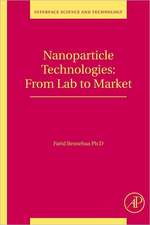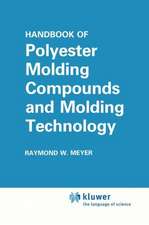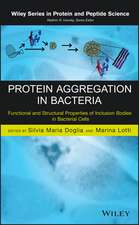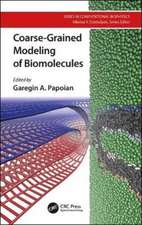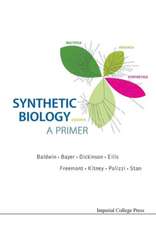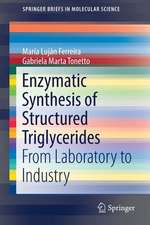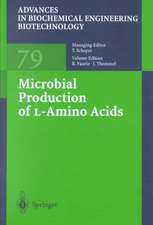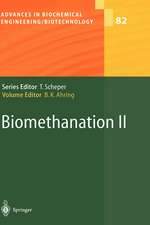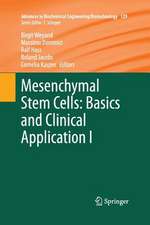Introduction to Surfactant Analysis
Editat de D.C. Cullumen Limba Engleză Hardback – 31 dec 1993
| Toate formatele și edițiile | Preț | Express |
|---|---|---|
| Paperback (1) | 1220.57 lei 43-57 zile | |
| SPRINGER NETHERLANDS – 21 sep 2012 | 1220.57 lei 43-57 zile | |
| Hardback (1) | 1225.62 lei 43-57 zile | |
| SPRINGER NETHERLANDS – 31 dec 1993 | 1225.62 lei 43-57 zile |
Preț: 1225.62 lei
Preț vechi: 1494.66 lei
-18% Nou
Puncte Express: 1838
Preț estimativ în valută:
234.60€ • 254.91$ • 197.19£
234.60€ • 254.91$ • 197.19£
Carte tipărită la comandă
Livrare economică 21 aprilie-05 mai
Preluare comenzi: 021 569.72.76
Specificații
ISBN-13: 9780751400250
ISBN-10: 0751400254
Pagini: 352
Ilustrații: XVI, 352 p.
Dimensiuni: 155 x 235 x 26 mm
Greutate: 0.67 kg
Ediția:1994
Editura: SPRINGER NETHERLANDS
Colecția Springer
Locul publicării:Dordrecht, Netherlands
ISBN-10: 0751400254
Pagini: 352
Ilustrații: XVI, 352 p.
Dimensiuni: 155 x 235 x 26 mm
Greutate: 0.67 kg
Ediția:1994
Editura: SPRINGER NETHERLANDS
Colecția Springer
Locul publicării:Dordrecht, Netherlands
Public țintă
ResearchCuprins
1 Introduction.- 1.1 Why analyse surfactants?.- 1.2 Sampling.- 1.3 Features peculiar to surfactant analysis.- 1.4 Calculations.- 1.5 Accuracy and precision.- 1.6 Analysis of competitors’ products.- 1.7 National and international standards.- References.- 2 Surfactant types; classification, identification, separation.- 2.1 Definitions.- 2.2 Common types of surfactants of all four classes.- 2.3 Classification of surfactants using indicators.- 2.4 Classification by acid and alkaline hydrolysis.- 2.5 Elemental analysis.- 2.6 Spectroscopic identification.- 2.7 Separation/extraction techniques.- 3 Basic techniques.- 3.1 Introduction.- 3.2 Extraction of surfactants.- 3.3 Acid-base titration.- 3.4 Potentiometrie titration.- 3.5 Methods for esters, amines, alcohols and unsaturated fatty materials.- 3.6 Two-phase titration of ionic surfactants with surfactants of opposite charge.- 3.7 Potentiometrie titration with surfactants of opposite charge using a surfactant-sensitive electrode.- 3.8 Direct potentiometry: calculation of results.- 3.9 Open-column chromatography.- References.- 4 Ion exchange.- 4.1 Introduction.- 4.2 What is ion exchange?.- 4.3 Ion-exchange media.- 4.4 Properties of ion-exchange resins.- 4.5 Guidelines on using ion-exchange resins.- 4.6 Practical applications of ion exchange.- 4.7 Analysis of column effluents.- References.- 5 Analysis of anionics.- 5.1 Introduction.- 5.2 General methods.- 5.3 Alkyl, alkylether and alkylphenylether sulphates.- 5.4 Monoalkanolamide and ethoxylated monoalkanolamide sulphates.- 5.5 Mono- and diglyceride sulphates.- 5.6 Alkylbenzene sulphonates.- 5.7 Alkane sulphonates.- 5.8 Alpha-olefin sulphonates.- 5.9 Oil-soluble sulphonates.- 5.10 Acyl isethionates.- 5.11 Fatty ester ?-sulphonates.- 5.12 Mono- and dialkylsulphosuccinates.-5.13 Sulphonated amides.- 5.14 Carboxylates.- 5.15 Alkyl and alkyether phosphates.- References.- 6 Analysis of nonionics.- 6.1 Introduction.- 6.2 Ethoxylated alcohols, alkylphenols and fatty acids.- 6.3 Block copolymers of ethylene and propylene oxide.- 6.4 Esters of polyhydroxy compounds and ethoxylated derivatives.- 6.5 Alkylpolyglycosides.- 6.6 Alkanolamides and ethoxylated alkanolamides.- 6.6.5 Determination of free ethanolamine, ester amine and free fatty acid or glycerol.- 6.6.6 Determination of ethanolamide, amide ester and methyl ester or glycerides.- References.- 7 Analysis of cationics and amphoterics.- 7.1 Introduction.- 7.2 Quaternary ammonium salts.- 7.3 Carboxybetaines.- 7.4 Amphoterics with weakly basic nitrogen.- 7.5 Sulphobetaines.- 7.6 Amines.- 7.7 Fatty diamines: determination.- 7.8 Ethoxylated amines and diamines.- 7.9 Amine oxides 189 References.- 8 Analysis of mixtures without separation.- 8.1 Introduction.- 8.2 Mixtures of anionics.- 8.3 Mixtures of nonionics.- 8.4 Mixtures of cationics and amphoterics.- 8.5 Mixtures of anionics and cationics.- 8.6 Mixtures with more than one component in each class.- References.- 9 Chromatographic analysis of surfactants.- 9.1 Introduction.- 9.2 Gas chromatography.- 9.3 High performance liquid chromatography.- 9.4 Thin layer chromatography.- 9.5 Other techniques.- 9.6 Summary.- 9.7 References.- 10 Infrared spectroscopy.- 10.1 What infrared spectroscopy offers the analyst.- 10.2 Theory.- 10.3 The infrared spectrometer.- 10.4 Sample presentation.- 10.5 Data manipulations.- 10.6 Examples and applications.- 10.7 Multicomponent analysis.- 10.8 Buying a spectrometer.- 10.9 Further information.- References.- 11 Nuclear magnetic resonance (NMR) spectroscopy.- 11.1 Introduction.- 11.2 Theory of NMR.- 11.3 The NMR spectrometer.- 11.4 The NMR sample.- 11.5 The NMR spectrum.- 11.6 Applications of NMR to surfactant analysis.- 11.6.6 Analysis of alkyl phosphate mixtures by 31P-NMR.- 12 Mass spectrometry.- 12.1 Introduction.- 12.2 Sample introduction.- 12.3 Methods of ionization.- 12.4 Mass analysis.- 12.5 Detection, sensitivity and data processing.- 12.6 Applications.- 12.6.6 FAB/LSIMS of amphoteric surfactants.- 12.6.7 EI MS of anionic surfactants.- References.- Appendix I List of ISO Standards relating to surfactant analysis.- Appendix II List of relevant ASTM Methods.
Recenzii
Experienced analysts in this field will find information and guidance in this book that they may not have known or may have forgotten....a thorough coverage of modern surfactant anaylsis. It would be a very useful addition to the library of any laboratory doing surfactant analysis |o Inform |d September 1994; This book will provide both the novice and experienced chemist with a clear, well-structured introduction to surfactant analysis. The text achieves a good balance between the theoretical aspects of the chemistry and sound practical instruction. The recommended techniques are often accompanied by useful advice obviously derived from extensive experience...an excellent introduction to the field... - Analytica Chimica Acta


